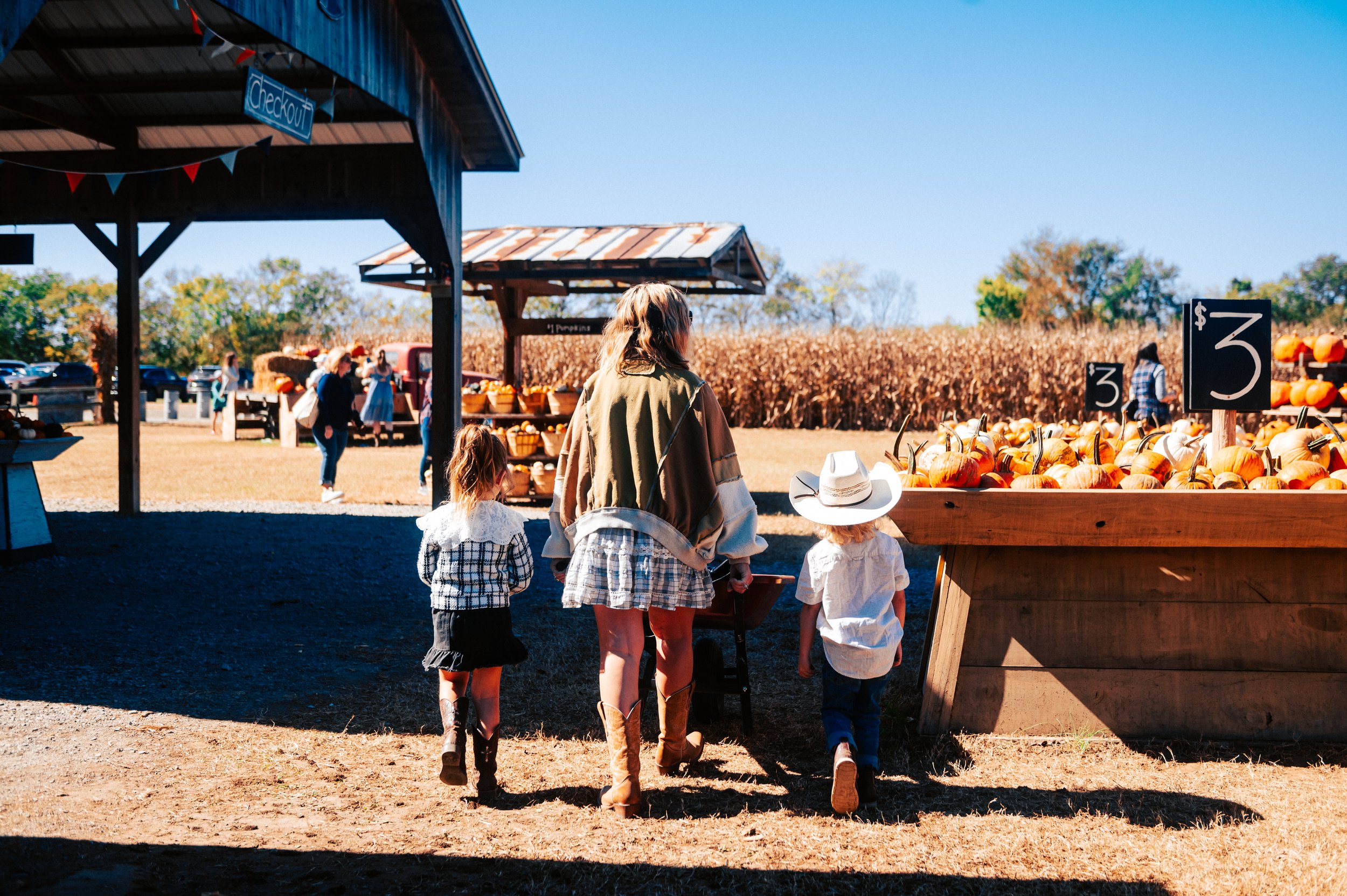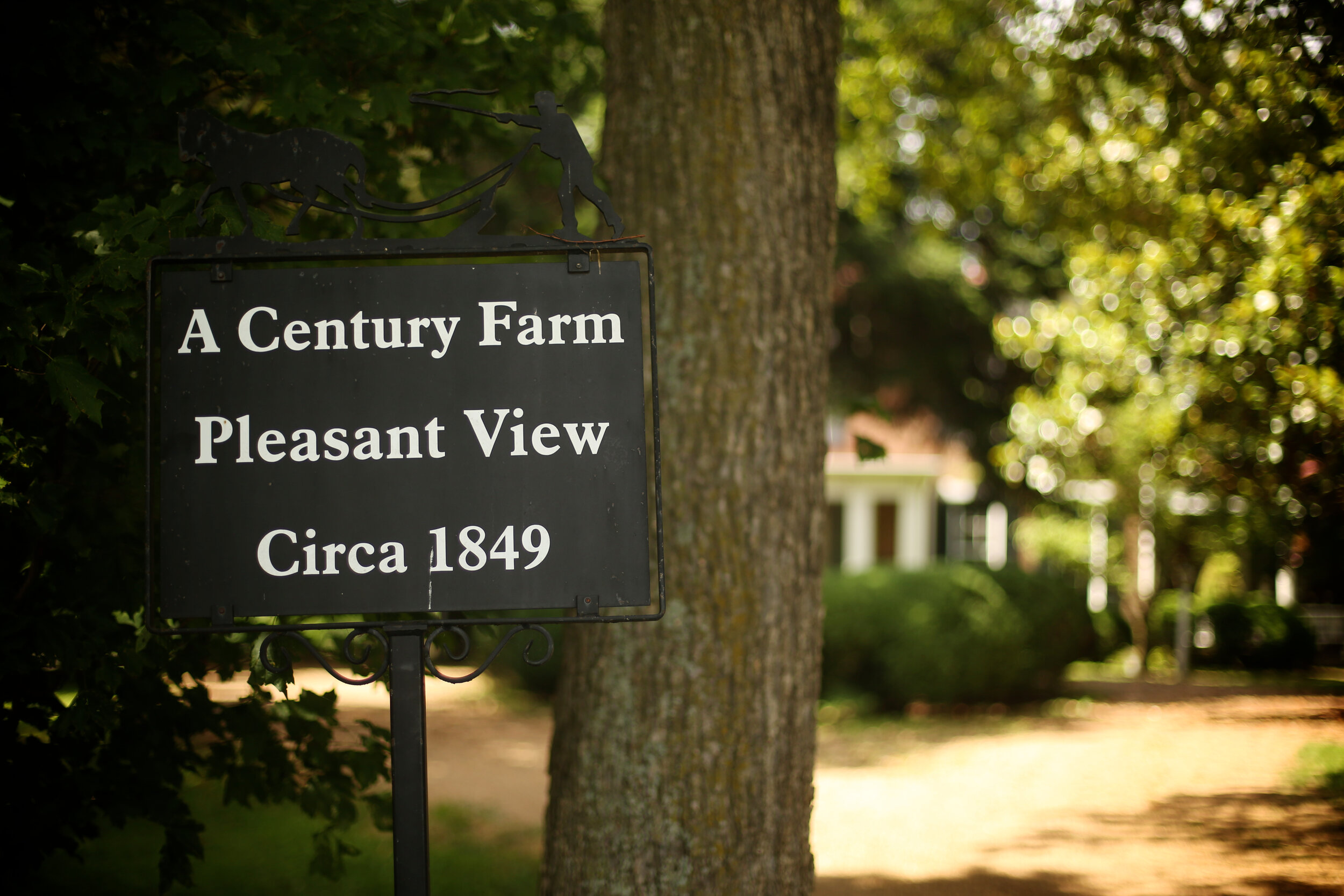Our historic working farm is located in the gently rolling hills of Franklin, Tennessee. We are only open to the public a few days in the Fall. The seventh generation farm has been owned by our family for over 165 years. In recent years we have diversified our farming efforts to include pumpkins and raising beef cattle. We also grow about 100 acres of hay which we use to feed our animals in the winter. Our main focus is to offer educational programs for groups in the Fall and the Spring and we also offer a down-to-earth fun Summer day camp. The Gentry Farm is a past recipient of the “Conservation Farm of the Year” for Williamson County for our efforts in stream mitigation and wildlife conservation easements. God has blessed us with this beautiful land and we enjoy sharing His creation with the community.
We are only open to the public in the Fall. The farm is private property the rest of the year.
Fall at Gentry Farm
Over 30 years of Fall family fun!
Farm History
A CENTURY FARM
150 years of Continuous Agriculture in Tennessee
In 1812, Samuel Fielding Glass, Sr. moved to Franklin from Winchester, Virginia and bought lot #68 on Main Street and opened a hat making business. His son Samuel Fielding Glass, Jr. began buying land for this farm in 1848 and in just a few years he amassed over 1000 acres, also buying farms for each of his four children. Early receipts tell us he was a farmer of cotton and raised dairy cows as well as hogs. In the early 1900's the family moved to town and rented the farm and the main house to tenant farmers. The Gentrys moved back to the farm in 1975 and today three families live on the almost 400 acre farm. Today, Samuel Fielding Glass, Jr.’s great-great grandson Allen Gentry and great-great-great grandson Jase Gentry continue running the family farm.
The main brick house was begun by Samuel Fielding Glass, Jr. before the Civil War. An early receipt describes work done on the stone foundation for S. F. Glass for $79.50. The stone mason goes on to say “we agree to return and complete his foundation for his house after the present political troubles have passed...” The receipt is dated April 24, 1861 just days after Fort Sumter was fired on. Other receipts lead us to believe the house was finished soon after the war. Bricks were laid in 1868 — doors, mantles, and blinds were ordered in September of 1868 (one wooden door 7’ by 3’3” for $8). Walls were plastered in March 1870 and wall paper was ordered at the same time (example: 64 rolls of marble paper for the hall cost $32.20). Carpet and curtains were bought in early 1870 (examples: 55 yards of Brussels carpet at $90.75). Several receipts for rooms full of furniture are dated 1870 (examples: 3 wardrobes, 2 dozen chairs, 3 bedsteads, 5 bureaus, 3 washstand, a looking glass for $120 and a marble top table for $20).
The frame portion of the home was moved in 1983 from a low-lying area of the farm. The early 1800’s double pen, one and a half story, dogtrot log structure was moved to the farm in 1986 from Goodlettsville. The numbered logs were cleaned and reconstructed adjacent to the frame house to make room for a growing family.
This log cabin was renovated and added to in 1984. The original structure, built in the early 1800’s with a beautiful sandstone chimney, is the oldest building on the farm.
















